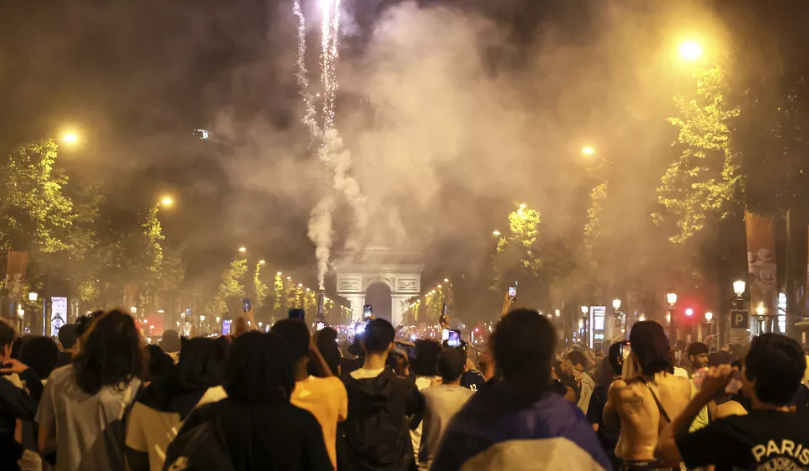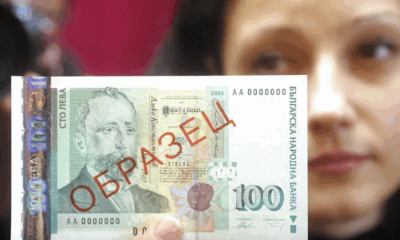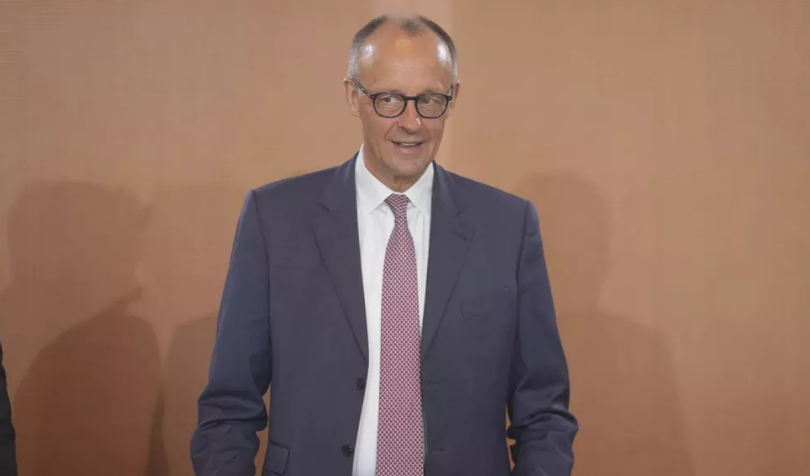News
Russia Accused of Over 2,900 Ceasefire Violations During Easter Truce, Says Zelenskyy

Ukrainian President Volodymyr Zelenskyy has accused Russia of violating a weekend Easter ceasefire more than 2,900 times, calling into question the sincerity of Moscow’s truce declaration. The 30-hour ceasefire, announced by Russian President Vladimir Putin on Saturday for humanitarian purposes, ended at midnight on Easter Sunday.
Despite the temporary truce, violence persisted across Ukraine. In the southern Kherson region, three people were killed and three others injured during the ceasefire period, local governor Oleksandr Prokudin said in a Telegram update. He reported that the region endured sustained attacks over the past 24 hours.
In his own statement early Monday, Zelenskyy outlined the scale of the alleged violations, saying Russian forces conducted 96 assault operations along the front lines, launched over 1,800 artillery strikes, and deployed hundreds of drones. “The nature of Ukrainian actions will continue to be mirror-like: we will respond to silence with silence, and our blows will be a defence against Russian blows,” Zelenskyy said. “Actions always speak louder than words.”
Ukraine had initially expressed scepticism about Moscow’s intentions, stating it would reciprocate only if Russia adhered to a genuine ceasefire. However, within hours of the truce beginning, both sides accused each other of violations.
Following the ceasefire’s expiration, Russian forces resumed offensive operations, launching a series of missile and drone strikes overnight. Ukraine’s Air Force reported that three missiles were fired at the southern Kherson and Mykolaiv regions, while 96 Shahed drones targeted various parts of the country. Of those, 42 drones were shot down and 47 others were jammed, the military said.
In central Ukraine’s Dnipropetrovsk region, Governor Serhii Lysak reported drone strikes that sparked fires at a food facility and another outbuilding, though no injuries were reported. In Cherkasy, local authorities said a piece of infrastructure was damaged in an overnight attack.
Meanwhile, Russia’s Defence Ministry claimed its forces fully complied with the ceasefire terms, stating they remained in “previously occupied lines and positions.” In contrast, Moscow accused Ukraine of breaching the truce 4,900 times, including six attempted assault operations, more than 1,400 artillery and rocket attacks, and over 3,300 drone strikes.
The ministry confirmed that Russian forces have since resumed what it refers to as the “special military operation” in Ukraine.
The breakdown of the truce highlights the ongoing volatility of the conflict and the deep mistrust between Kyiv and Moscow, despite public appeals for temporary peace.
News
Two Dead, Nearly 200 Injured as PSG Title Celebrations Turn Violent Across France

What began as jubilant celebrations of Paris Saint-Germain’s historic UEFA Champions League victory ended in violence and tragedy in parts of France, with two people killed and nearly 200 injured during street festivities that spiraled out of control.
Authorities confirmed on Sunday that a 17-year-old boy was fatally stabbed in the southwestern town of Dax during a PSG street gathering, while in Paris, a man died after his scooter was struck by a car amid the crowded celebrations. Both incidents are currently under investigation.
The unrest followed PSG’s dramatic win in Munich, where the club secured its first-ever Champions League title, marking a milestone in French football history. While fans across the country took to the streets to celebrate, several areas descended into violence.
According to the French Interior Ministry, a total of 294 people were arrested nationwide as of 2 a.m. Sunday. Of the nearly 200 injured, 21 were police officers—18 of them in Paris alone. One officer remains in a medically induced coma after being struck in the face by a firework.
Interior Minister Bruno Retailleau condemned the violence in a statement on social media. “True PSG fans are celebrating a magnificent achievement. Meanwhile, barbarians have taken to the streets to commit crimes and provoke law enforcement,” he said. “It is unacceptable that people cannot celebrate without being endangered by a violent minority.”
Despite the unrest, the majority of gatherings were peaceful, authorities noted, with large crowds celebrating the historic win in cities including Marseille, Lyon, and Lille.
The PSG squad returned to Paris from Munich on Sunday afternoon aboard a Qatar Airways charter flight, arriving at 4 p.m. The team is expected to continue celebrations in the capital with tens of thousands of fans, under heightened security measures.
The violent turn of events has reignited debate in France over crowd control during major sporting celebrations, and how best to ensure public safety without dampening national enthusiasm.
PSG’s Champions League triumph marks a defining moment for the club, which has long pursued European glory. As the team prepares for a hero’s welcome, officials are urging fans to celebrate responsibly and respect public safety.
News
Ukraine Launches Major Drone Assault on Russian Airfields, Hits Over 40 Strategic Bombers

Ukraine’s Security Service (SBU) has claimed responsibility for a large-scale drone strike on four Russian air bases over the weekend, targeting dozens of strategic bombers across vast swaths of Russian territory — from Siberia to the Arctic.
According to Ukrainian officials, the operation, codenamed “Spiderweb” (Pavutyna), was launched on June 1 and struck 41 long-range bombers stationed at airfields in Russia’s Ryazan, Ivanovo, Irkutsk, and Murmansk regions. The attack is being hailed by Kyiv as one of its most ambitious and far-reaching strikes since the beginning of Russia’s full-scale invasion.
“Enemy strategic bombers are burning en masse in Russia,” a senior SBU official said, noting that the operation was specifically designed to cripple Moscow’s airstrike capabilities. “This is a large-scale special operation aimed at destroying enemy bomber aircraft.”
The four airfields targeted were Dyagilevo in the Ryazan region, Ivanovo in central Russia, Belaya air base in Irkutsk — over 4,000 kilometers from the front lines — and Olenya air base on the Kola Peninsula near the Arctic, roughly 2,000 kilometers from Ukraine’s border.
Ukrainian officials described the complex logistics of the operation, which involved covertly transporting drones deep into Russian territory, hiding them until the time of launch, and remotely executing the strikes. While specific details remain classified, Ukraine previously revealed it had developed drones with a flight range of up to 3,000 kilometers, enabling long-range operations like this.
Satellite imagery analyzed after the attack shows the presence of several high-value Russian aircraft types at the affected bases, including the Tu-95, Tu-22M3, Tu-160, and A-50 radar planes. These aircraft have been central to Russia’s long-range missile campaign against Ukraine.
The Tu-22M3, for example, is capable of carrying Kh-22 and Kh-32 cruise missiles at speeds exceeding Mach 4. The Tu-95, a Cold War-era bomber once designed to carry nuclear weapons, has been retrofitted to launch conventional cruise missiles. The A-50 aircraft provides airborne radar surveillance and target coordination for Russian forces.
The scale of the strike underscores Ukraine’s growing long-range capabilities and signals a shift in Kyiv’s strategy to disrupt Russian air operations at their source. President Volodymyr Zelenskyy said he had held meetings with the Ministries of Defense and Foreign Affairs, along with the General Staff and SBU, to coordinate further defense and counter-offensive planning.
There has been no immediate official response from Moscow regarding the extent of damage caused.
News
German Chancellor Merz to Meet President Trump in Washington Amid Global Tensions
-

 Business1 year ago
Business1 year agoSaudi Arabia’s Model for Sustainable Aviation Practices
-

 Business1 year ago
Business1 year agoRecent Developments in Small Business Taxes
-

 Politics1 year ago
Politics1 year agoWho was Ebrahim Raisi and his status in Iranian Politics?
-

 Business11 months ago
Business11 months agoCarrectly: Revolutionizing Car Care in Chicago
-

 Business11 months ago
Business11 months agoSaudi Arabia: Foreign Direct Investment Rises by 5.6% in Q1
-

 Technology1 year ago
Technology1 year agoComparing Apple Vision Pro and Meta Quest 3
-

 Politics1 year ago
Politics1 year agoIndonesia and Malaysia Call for Israel’s Compliance with ICJ Ruling on Gaza Offensive
-

 Sports10 months ago
Sports10 months agoKeely Hodgkinson Wins Britain’s First Athletics Gold at Paris Olympics in 800m


























